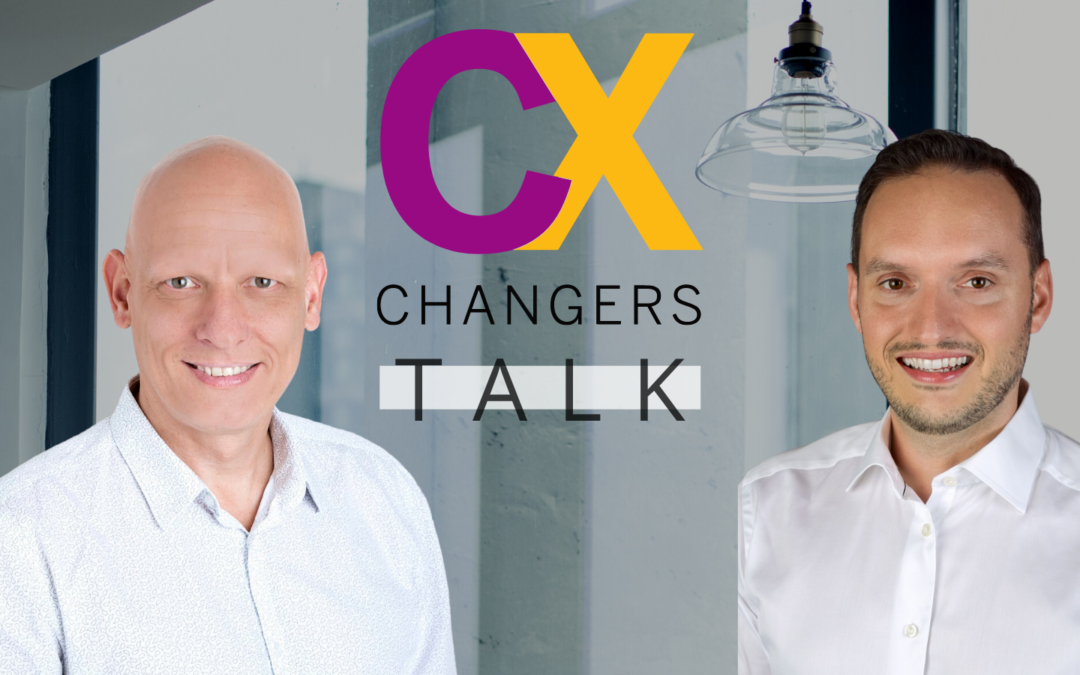
by twieberneit | Jan 3, 2023 | Blog |
Happy New Year to everyone! Apart from all the political suff that I do not want to dive into, the year 2022 has seen a lot of exciting events and topics, from the rise and fall of the Metaverse, to lots of defaulting crypto companies. Towards the end of the year, chatGPt stirred up quite some waves. Not to forget the long story of Elon Musk taking over and handling Twitter … In more conventional areas, we have seen more of a renewed interest in affordable CX suites. Earlier in the year, also CDPs have been a big topic. Tips for good engagement to achieve customers having a positive experience is also always a topic. (Nearly) all of this is reflected in the 2022 top ten of my blog, which has seen a good number of visits. A big and heartfelt thank you to all my readers! Here are your top ten articles of 2022. #10 How to engage for customer experience and success #9 How to create value with a CDP #8 The impact of the supply chain on the customer experience #7 A great human – bot conversation with lots to learn #6 How (and why) a marine consultancy made Zoho core of their business #5 The almighty Metaverse – its Rise and Fate #4 How to make Zoho a business’s operating system #3 How to Zoho’matize a business #2 Don’t mess with Zoho – A Zohoday 2022 recap #1 Metaverse – the return of the Undead All of these are well worth revisiting. Thank you again for your readership. I wish you all the best for 2023. Exciting times are lying ahead of...

by twieberneit | May 23, 2022 | Blog, Sponsored |
These days, Customer Data Platforms, or in brief CDPs, are one of the most discussed topics in the CX industry. Last time I looked, the CDP Institute counted more than 150 CDPs of different flavors that target different business challenges. This raises a lot of questions, chiefly: What is a CDP? Which business challenges do companies solve with a CDP and how do they approach the solution, i.e. how do they proceed implementing one? Let’s start at the beginning. According to the CDP Institute, a CDP is “packaged software that creates a persistent, unified customer database that is accessible to other systems”. Figure 1: A simple model of CDP functionalities Functionalities offered by CDPs reach from simple data gathering and unification to the activation and even active usage of information derived from customer data. This already shows the different business challenges that can be addressed with a CDP. It also shows, that the business challenges can be addressed in a way that provides increasing value to the business. As an aside: A good CDP always bases on a solid foundation of customer identities and the consents that customers have given. The second important question is how a CDP can or should be implemented. What is a viable approach? To learn more about these questions, we spoke with Mario Kurmann, Senior Product Manager CRM at Migros Fachmarkt AG in Switzerland. Mario was responsible for the initial CDP implementation and now for its continuous improvement. Migros is one of Switzerland’s biggest retailers. Fachmarkt, as part of Migros, basically operates five independent brands in the areas of sports, electronics, home improvement, furniture...

by twieberneit | Apr 13, 2021 | Blog |
It is time to talk about customer journeys and customer journey orchestration. Again. The theme of two of my recent articles has been about customer data. First, in my article Why you don’t want a 360-degree on the customer I rubbed the coveted 360-degree view on the customer, which is utterly meaningless as a contextually relevant view on the customer is required to take any decision or action. Then I followed up with the view that a customer data platform (CDP) is not an end in itself but a means to an end. Actually, two ends. They are engagement and experience. Back in the day when no one talked about CDPs I wrote in a guest post There is no customer experience without customer engagement to Paul Greenberg’s ZDNet column that a well-orchestrated CRM system sets the foundation “for every meaningful and relevant engagement, proactive (company initiated) as well as reactive (customer initiated), which covers all communication/engagement channels, and an increasing number of possible touch points. The CRM system, at its core, is channel- and touch point agnostic. But it supports and serves all of them, every single one – including those that we do not yet know of. The customer engagement, as an ongoing process, itself happens via any number of interactions, the touch points chosen by the customer, but offered by the company”. This is, of course, based on Paul’s definition that “customer engagement is the ongoing interaction between company and customer, offered by the company and chosen by the customer”. Nowadays one could replace the term CRM with CDP, but how we call it doesn’t really...

by twieberneit | Feb 4, 2021 | Blog |
Everyone (and their dog) tells you that you need a 360-degree view on your customer, right? According to Techtarget, the “360-degree customer view is the idea, sometimes considered unattainable, that companies can get a complete view of customers by aggregating data from the various touch points that a customer may use to contact a company to purchase products and receive service and support.” And you are fully sold to this famed concept and term. In this case, I am sorry for spoiling your day. You in all likelihood do not have it, you do not need it, and here’s the kicker: You do not want it. The 360-degree view on the customer is just another case of too many people using too many too big words. You are asking why? Let me explain. I fully get it. The customer is your North Star, the guiding light, the one reason for your company to exist. Your company is customer centric, you are looking outside-in. Your company’s purpose includes to help your customers fulfilling their needs and desires, thereby making a profit. And you are successful doing this. No doubt, you are on the right way. And indeed. What is needed to follow this way in reality involves collecting data about your customers. A lot of data. Master data, transactional data, behavioral data, consent data, structured and unstructured; you name it. Over time, this becomes a veritable treasure trove, if collected and used correctly. Even if not. When doing it right, you have already broken down many, ideally all, of the data and organizational silos that prevent you from communicating with...

by twieberneit | Jan 18, 2021 | Blog |
It’s that time of year again. And although I’m not really into trend articles, I think it’s time this year to start thinking about what’s going on in the worlds of customer experience and customer relationship management – and how it’s affecting businesses and customers. Especially since I was also asked … So here’s my list of developments that I think will be relevant in the next few years, in quite random order, and admittedly not entirely without overlap. Digitization – not Digital Transformation If there is one theme that has and continues to permeate through the Covid pandemic, it is that of digitalization. The pandemic has painfully brought to light the failure to make necessary investments in consistent processes and technologies in the past. As a result, many companies continue to have processes that are characterized by media disruptions. The need to improve here is also the overarching theme for some of the other developments and trends currently evident. Companies and their employees, as well as customers, have had to learn to deal with a highly distributed work infrastructure. Companies have responded by building communications infrastructures (zoom fatigue anyone?) and building out or rebuilding their sales and service infrastructures for increased remote capability. This is being done in 3 phases: First, as part of a stop-gap solution, an infrastructure was quickly pulled up that allowed operations to continue somehow. In the second phase, order was brought into the chaos thus produced. Now, in the third phase, more attention is being paid to integration and efficiency. As a result, we will see more end-to-end digitized processes that address the...






